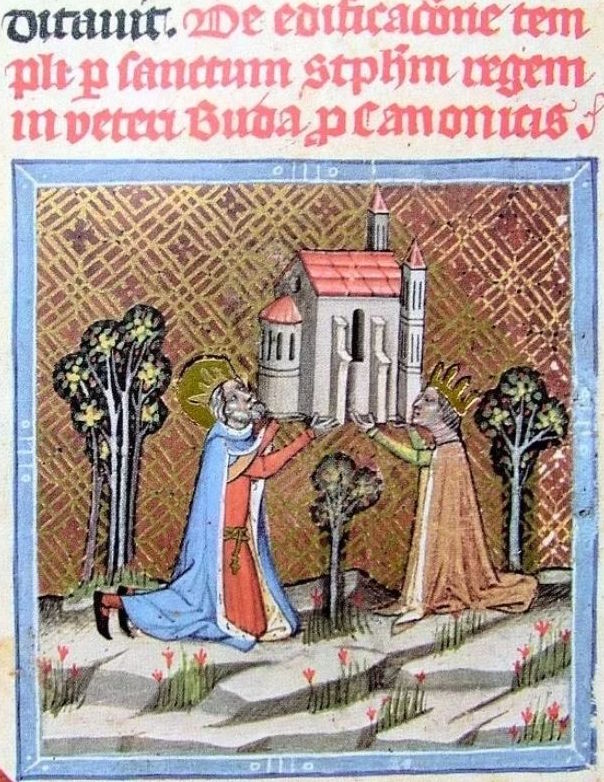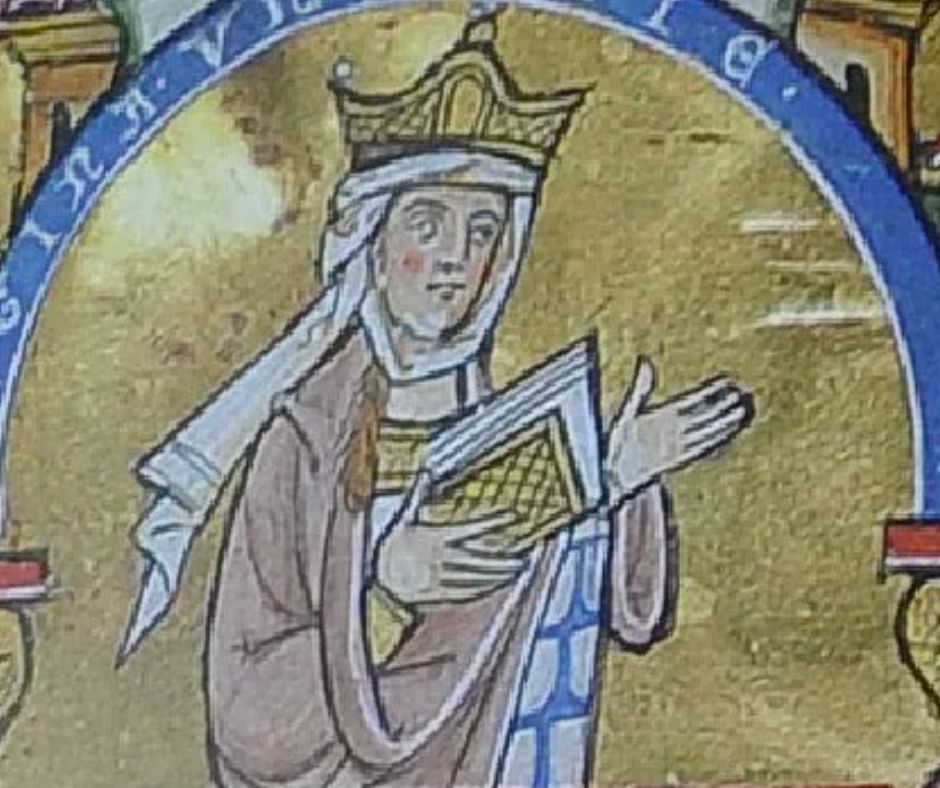Hungarian queen in the Middle Ages: a “perilous occupation”

Being a Hungarian queen in the Middle Ages was by far not as glamorous as one might think today. Throughout her entire life, the queen depended on her husband’s whims and fancies, she could enjoy little to no independence. On top of that, she was considered a foreigner in her country. Her most important duty was to bear a son to continue the imperial line. Besides, being a widowed Hungarian queen was particularly dangerous during the later phase of the Middle Ages. Several Hungarian queens tried to push their limits and get more out of their life than she was, by societal standards, destined for. While some of them succeeded, others had a gruesome end. We will show you three examples of the latter.
The Hungarian queen who turned into an angry viper
Gisela of Bavaria (c. 985 – 7 May 1065) was the first queen consort of Hungary by marriage to King Stephen. According to HelloMagyar, Queen Gisela was a controversial figure in Hungarian history. On one hand, she was beatified and declared blessed by the Catholic Church since she undoubtedly played an important role on the side of King Saint Stephen to establish the Christian state of Hungary. On the other hand, she was villainised by the medieval chronicles for blinding Vazul (cousin of Stephen) and chasing away his sons. She was often depicted on the pages as an angry viper. On top of that, in recent times, she has been also seen as the forefront figure of the Germanisation attempts in Hungary.
According to the early sources, Gisela seems like a typical medieval Christian queen who made generous donations to several religious entities.
Her life, however, was shadowed by the devastating early deaths of her children, including Prince Emeric who was killed by a boar while hunting. Gisela also outlived King Stephen which meant she had to face some real difficulties. Widowed medieval queens were often seen as persona non grata after their husbands’ deaths. After King Peter the Venetian, nephew of King Stephen, was crowned, Gisella was deprived of all her lands and wealth. She was practically exiled and locked up in a castle that was guarded by soldiers. She received better treatment from the next king, Samuel Aba, however, she was still not taken as an ally. Eventually, Gisela left the country when King Peter regained the throne and went to Passau to join the nunnery of Niederburg, where she died in 1065.

Read also: Clemenceau’s Hungarian daughter-in-law’s infidelity caused Trianon?
The Hungarian queen who was assassinated
According to historians, the medieval chronicles that painted Queen Gisela in a negative light actually meant to depict another Hungarian Queen, Gertrude of Merania (c. 1185 – 28 September 1213). She was the wife of Andrew II of Hungary, also known as Andrew of Jerusalem. She might be familiar from Bánk Bán, the famous opera of Hungarian composer, Ferenc Erkel, as the wicken queen who came from a faraway land and does various schemes to financially benefit her own relatives. However, the reality is more complex than the opera tells us. Even though King Andrew II indeed owned a vast land, Gertrude’s relatives in Merania did not manage to get their hands on much of it. Only, Berthold, the brother of Gertrude received some land and was elected as the bishop of Kalocsa, which must have begrudged some people at that time.
While King Andrew was campaigning in Galicia, the Hungarian nobles, led by Peter, decided to get rid of the queen.
In 1213, on a hunt with Berthold and their guest Duke Leopold VI of Austria in Pilisszentkereszt at the Pilis Mountains, she was killed. Gertrude’s body was torn to pieces, her brother and Duke Leopold narrowly escaped with their lives. Due to the then political climate, the act of her murderers remained unpunished during the rule of Andrew II. He only ordered to have Peter impaled. The king built a Cistercian monastery in the place where his wife was murdered.

The Hungarian queen who was exiled by her own son
Euphrosyne of Kiev c. (1009 – 5 July 1044) was only 16 when she married King Géza II. Unlike other medieval queens, Euphrosyne had some influence on her husband since she had him intervene several times in the internal affairs of the Russian cars. However, she was not spared of great struggles after her husband’s death. First, his son King Stephen III. was crowned in 1162. She held a regency status for a while since Stephen was still underage at that time. However, her government did not last long. She had to flee to Pozsony (Bratislava) and then to Austria when her uncle Ladislaus II attacked them with his Byzantine army. To her luck, Ladislaus II died within a year and the throne was given to King Stephen IV. However, Euphrosine assisted Stephen III. to find German and Austrian allies, and thus he managed to defeat the king in a battle at Szekesfehervar in 1164. After these events, there was a peaceful period in Euphrosyne’s life but it did not last long. In 1172, King Stephen III. suddenly lost his life and the throne became vacant. The Hungarian elite was divided about whom to crown to be the successor of the king: one option was Prince Béla, the older brother of King Stephen III., but Prince Géza, the younger brother, also seemed eligible. Interestingly, Euphrosyne supported the younger brother. She also had Lukács, the bishop of Esztergom, on her side who previously strongly opposed the kingdoms of Ladislaus II and Stephen IV. However, Prince Béla succeeded to overcome all of them and gained the throne with the help of the pope.
Béla’s first act as a king was to imprison Prince Géza and also Euphrosyne since she favoured the older brother over him.
When Euphrosyne was finally set free, King Béla had her exiled from the kingdom. First, she went to Constantinopole, but then she made her way eventually to Jerusalem, where she joined the Orthodox monastery of Mar Saba near Bethlehem. According to Epistolae, we know that she was living among the Hospitallers in 1186 as a nun before her death in c. 1193. A late 13th-century charter says she was buried at the Hospitaller church in Székesfehérvár which she had completed, so her body may have been exhumed from Jerusalem and reburied in Hungary.

Read also: The story of the Hungarian hussars – PHOTOS
Source: hellomagyar.hu, epistolaectl.columbia.edu






Being a monarch in any country in Europe in the middle ages was a ‘perilous occupation’ and many were born outside of the country that the were rulers of. I suppose you could call call an ‘occupational hazard’.